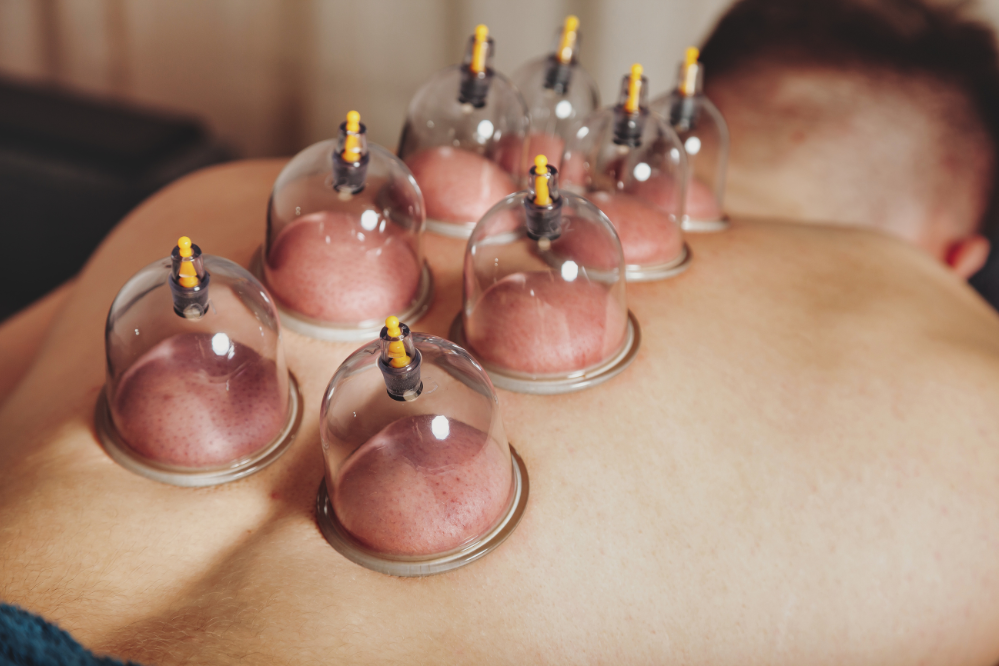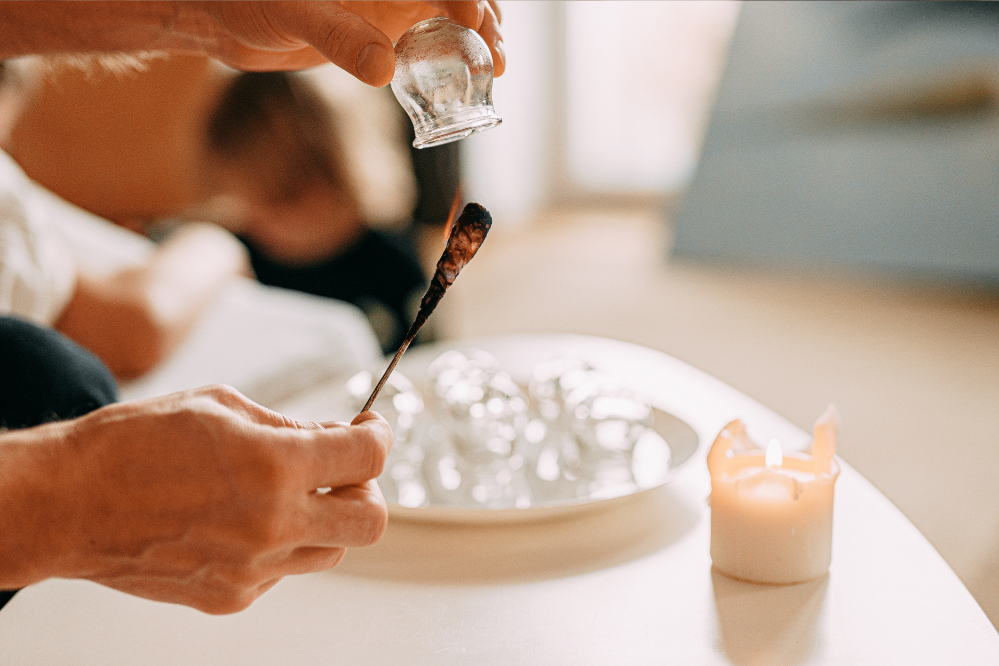Have you ever heard of cupping? It’s a fascinating therapeutic practice that has been used for centuries across cultures. Cupping has been used to treat various conditions, from musculoskeletal pain to respiratory disorders. While some people swear by the benefits of cupping, others remain skeptical.
In this article, we will dive into the world of cupping, exploring what it is, how it works, and its effectiveness.
What is Cupping?
Cupping is an ancient alternative medicine that involves a licensed therapist putting special cups on the skin for a few minutes to generate suction. There are two types of cupping therapy – dry and wet.
To perform dry cupping, a substance such as alcohol, Chinese herbs, or paper is placed in a cup and set on fire by the therapist, also known as fire cupping therapy. Once the fire goes out, the cup is placed upside down on the skin. A vacuum is created as the air inside the cup cools, which causes the skin to rise and for blood vessels to expand. The cup is usually left in place for about 3 minutes.
Wet cupping, also called “hijama,” takes the process of dry cupping a step further. Once the cup has been left in place for 3-5 minutes, the therapist administers little cuts to the raised skin allowing it to release toxic blood and fluids. The therapist may apply pressure to speed up the fluid flow process, and another cup is placed on the same area to suck up the liquids.
The cups can be made from:
– Glass
– Bamboo
– Earthenware
– Silicone
The Benefits of Cupping

The major benefit of cupping increased blood flow, which helps increase the rate of healing in recovery from muscle fatigue, injuries, and other conditions. Many athletes, including Michael Phelps, use cupping muscle knots to help improve and keep up performance.
Cupping can be used to treat any of the following conditions:
– Plantar fasciitis
– Back, hip, and IT band pain
– Pain in the shoulders, upper back or neck
– Carpal tunnel syndrome
– Fibromyalgia
– Certain respiratory issues, such as asthma, bronchitis, pneumonia and chest congestion related to the common cold
– Fertility
Try Cupping Therapy at the AIAM Clinic
Why Study Chinese Cupping?
Treating patients with holistic methods can help them be the best version of themselves, but a career in acupuncture with a specialization in cupping can be rewarding for you as well. Some of the benefits you can expect to enjoy from this career path include:
Flexibility in scheduling
One of the best perks about pursuing a career in acupuncture therapy is the chance to make your own work schedule. You can have your own practice if you wanted to, or you could choose to go into business with someone else. The choice is entirely yours.
Travel opportunity
As a licensed acupuncturist specializing in cupping, you are in demand virtually everywhere. You choose to live wherever you’d like and practice in any health setting you wish. Additionally, as a travel nurse, you could travel regularly for work. Spas, resorts, cruise ships and other settings are just some of the exciting places a career in acupuncture.
Improved workplace atmosphere

Traditional clinical settings can be stuffy or ridden with bureaucracy, but working in a practice specializing in acupuncture has much more freedom. Running your own practice means you can set the vibe.
Practicing independently
You have a world of opportunity as an acupuncturist, and one of the best opportunities is the chance to be your own boss. You can build your own career from the bottom up, which can be very rewarding.
A faster career path
You have a world of opportunity as an acupuncturist, and one of the best opportunities is the chance to be your own boss. You can build your own career from the bottom up, which can be very rewarding.
Chinese Cupping Therapy at AIAM
Getting a Master’s Degree in Acupuncture from AIAM prepares healthcare practitioners for provide holistic and alternative treatments for patients who wish to alleviate their conditions with as few medications as possible. Chinese cupping therapy is just one of many different traditional Chinese medicines you can expect to learn through AIAM’s Acupuncture program. Others include:
– Korean hand therapy
– Gua sha
– Moxibustion
– Needle-less acupuncture
AIAM’s acupuncture programs have been running for 20 years – making the program one of the longest-running in the Midwest. Prospective employers look specialization when hiring new therapists, and AIAM can prepare you to showcase your capabilities with cupping. Through the program you will also learn key business skills and professionalism, which sets you up for a rewarding, long-lasting career as a licensed therapist.
The Bottom Line
Cupping is a traditional Chinese therapy that has been used for centuries to treat various ailments. It is believed to help increase blood flow, reduce inflammation, and promote relaxation.
If you want to learn more about cupping or other traditional Chinese therapies, AIAM offers a range of programs in acupuncture, massage therapy, and more, all designed to help you explore natural healing methods and achieve optimal health and wellness. Don’t hesitate to contact AIAM today to learn more about their programs and how they can help you on your journey to better health.
Frequently Asked Questions (FAQs)
What is the purpose of cupping?
The purpose of cupping is to improve blood circulation, relieve muscle tension and soreness, and promote overall relaxation and well-being.
Is cupping painful?
Cupping therapy can cause some discomfort, but it is usually not considered painful. The sensation can vary from person to person and depends on factors such as the individual’s pain tolerance, the area being treated, and the level of suction applied.
What are the results of cupping?
Using cupping techniques can enhance blood flow to the specific area where the cups are applied. This can ease muscle strain, boost the overall blood circulation in the body, and encourage cellular healing. Additionally, it facilitates the creation of fresh connective tissues and blood vessels in the tissue.
When should you not use cupping?
Using cupping therapy is not recommended in certain situations, such as when there is an open wound, inflamed or infected tissue, bleeding (both internally and externally), a fracture, or a severe muscle or ligament sprain. It should also be avoided in cases of complete tendon rupture.
Is cupping technique safe?
Yes, cupping technique is generally safe when performed by a trained and licensed practitioner using sterile equipment. However, it causes some mild side effects such as bruising, skin irritation, and discomfort during the procedure.